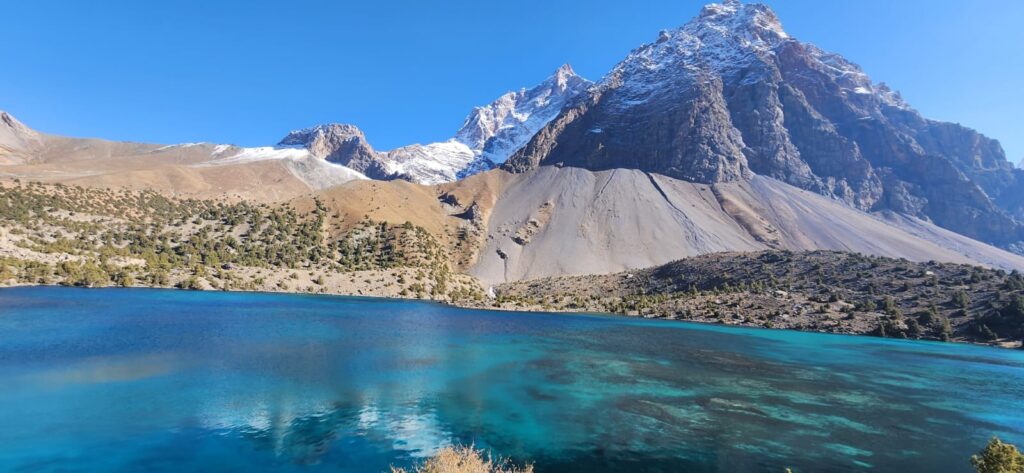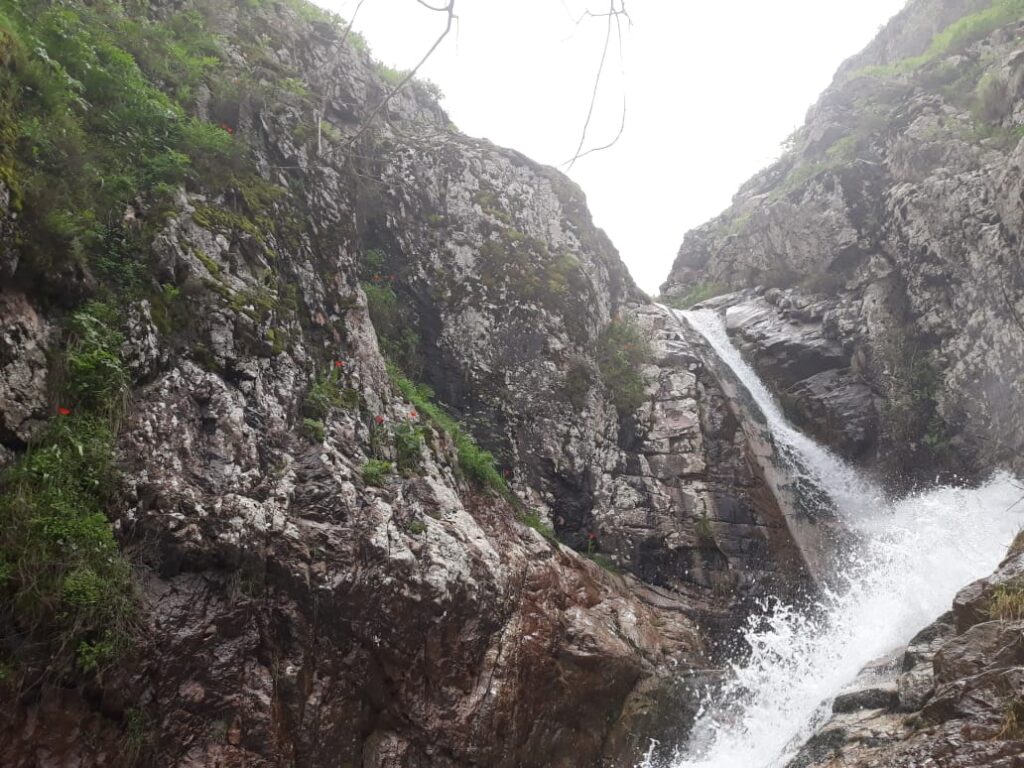In the cotton plains of southern Tajikistan, geography has been rewritten not by tectonic forces, but by canals. Rivers have been bent, soils disciplined, and valleys turned into lattices of irrigated furrows. Cotton called as “white gold” is more than a crop here. It is a landscape-making force that has shaped not only economic patterns but the physical and ecological fabric of entire regions.
In Khatlon and along the Vakhsh River, you can trace the logic of cotton from the air. Rectangular fields align with irrigation canals that run like engineered rivers, bringing summer water from the Vakhsh and Amu Darya systems into lands that were once floodplains and mixed farming zones. When Soviet planners turned these valleys into cotton monocultures in the mid-20th century, they did not just introduce a new crop, they redesigned the land. Pumping stations rose along canals, levees redirected floods, and drainage networks were dug deep into alluvial soils. The modern cotton geography of Tajikistan was born in straight lines and hydraulic ambitions (Spoor, 1993; Wegerich, 2008).
Cotton fields are not passive surfaces, they are active infrastructures. Each furrow channels water according to precise schedules; each field boundary reflects negotiations between soil quality, canal proximity, and labor availability. The “cotton landscape” is a living map of irrigation logic, soil management, and state ambition.
Even today the geometry remains visible. Near Bokhtar, broad canals feed branching laterals that divide into field-level ditches. In early summer, cotton stands knee-high, its leaves dense and dark green; by September, the fields turn pale as bolls open. In some districts, cotton dominates entire tracts, occupying the best-irrigated plots nearest canal heads. Wheat and fodder crops are pushed to the edges, onto soils that are often saltier or less reliably watered. The distribution mirrors infrastructure: cotton thrives where pumps run steadily, canals are maintained, and drainage keeps water tables at bay.
Farmers talk about these geographies with a kind of practical fluency. One man in Kushoniyon district explained, “Cotton gives money, but only if water comes on time. If the canal is late, the crop burns.” A woman from Vakhsh added, “We know which fields will grow well- those near the main canal. The far ones, sometimes we plant wheat instead.” Their comments reveal how geography, infrastructure, and livelihood decisions intertwine. Cotton fields cluster near reliable flows; wheat finds refuge on the margins.
The environmental consequences of this cotton geography have accumulated over decades. Irrigation without adequate drainage has raised groundwater levels in many low-lying areas, bringing salts to the surface. White crusts appear in depressions by midsummer. In parts of Khatlon, salinity affects up to 30% of irrigated lands, reducing yields and forcing some farmers to shift to less sensitive crops (Christmann et al., 2009). Drainage canals, once maintained rigorously, now silt up in places, further exacerbating waterlogging. These physical processes redraw the boundaries of productive cotton fields, season by season.
Cotton also reshaped settlement patterns. Villages expanded along canals, roads followed irrigation lines, and cotton processing gins clustered at transport junctions. The spatial organization of rural southern Tajikistan today reflects cotton’s infrastructural footprint: linear villages, canal-side farms, and centralized collection points. It is difficult to imagine these landscapes without cotton; the crop has literally inscribed itself onto the land.
Walking through cotton fields in late summer, the labor demands are obvious. Harvest is still largely done by hand, and women make up the majority of pickers. “My hands hurt at night during the harvest,” one woman said while resting in the shade of a pump house. Cotton’s geography is also a geography of labor: concentrated in specific seasons, tied to the rhythm of canal flows, and dependent on large numbers of workers. As younger men leave for seasonal labor migration abroad, picking often falls to women and older family members (Lerman & Sedik, 2009).
Cotton is thirsty. Each hectare requires thousands of cubic meters of water through the growing season (FAO, 2016). In dry years, canal scheduling becomes critical. Farmers at the canal tail ends receive water later, sometimes too late for peak growth. “The cotton dies first in the far fields,” a farmer from Jaloliddin Balkhi district remarked. “The headworks get their share; we get what remains.” This upstream–downstream dynamic is a defining feature of Tajikistan’s cotton regions, linking geography with access and vulnerability.
Salinization and irrigation inefficiencies feed back into land use decisions. Some degraded fields are shifted to fodder or wheat; others are left fallow. The cotton landscape is dynamic, responding to infrastructure decay, soil shifts, and changing water availability. Satellite imagery from the mid-2010s shows pockets of declining cotton cultivation in poorly drained zones, contrasting with stable or even expanding belts near rehabilitated canals (FAO, 2016; Wegerich, 2008). These spatial patterns speak to both environmental processes and the geography of investment.
Cotton’s dominance also compressed ecological diversity. Where floodplains once hosted mixed cropping and riparian habitats, monoculture now reigns. Habitat for birds, insects, and small mammals has contracted. Drainage systems alter groundwater regimes, and reduced flood pulses affect downstream tugai forests. The cotton landscape has become ecologically simplified, and in places, environmentally fragile (Christmann et al., 2009).
Yet cotton persists because its geography is deeply entrenched. Pump stations, canal alignments, and ginning infrastructure are tailored to it. “We cannot change crops overnight,” one irrigation engineer explained. “The whole system was built for cotton. To change it, you must change everything.” That inertia is geographic as much as economic—cotton has become the backbone of valley landscapes.
Today, debates over the future of cotton are growing louder. Climate variability, aging irrigation infrastructure, and soil degradation pose long-term challenges. Some farmers experiment with crop rotation or shorter irrigation cycles; others talk of diversification. But the legacy grids of canals, the sedimented soils, and the rhythms of labor bind the system together. Cotton geography endures, even as pressures mount.
At dusk, the fields of Khatlon turn golden. Dust hangs over canals, and the lines of furrows stretch into the distance. Cotton has remade these valleys, once floodplains and mosaic farmlands, into linear, irrigated, human-engineered terrains. The story of Tajikistan’s cotton is written not only in export statistics but in the very shape of the land.
References
- Christmann, S., Quasem, A., & Rajabov, T. (2009). Salinity management in Central Asian irrigated agriculture. Irrigation and Drainage, 58(1), 75–87.
- FAO. (2016). FAOSTAT Database. Rome: Food and Agriculture Organization.
- Lerman, Z., & Sedik, D. (2009). Agrarian reform in Tajikistan: achievements and challenges. FAO Regional Office for Europe and Central Asia.
- Spoor, M. (1993). Transition to market economies in former Soviet Central Asia: Cotton, water and restructuring. Europe-Asia Studies, 45(1), 47–68.
- Wegerich, K. (2008). Blueprints for water user associations’ accountability: A comparison of Kazakhstan and Uzbekistan. Water International, 33(1), 43–54.








